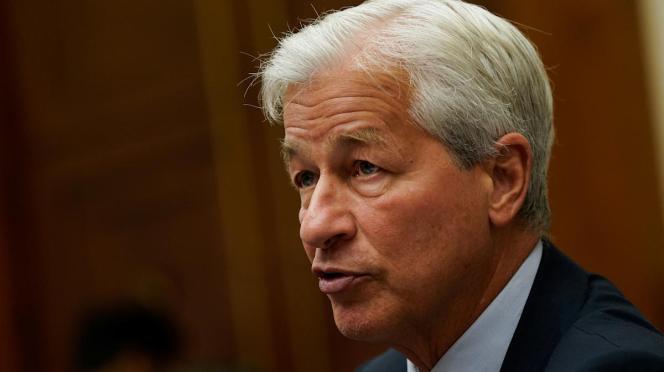Beltrami County Board receives finance, Juvenile Diversion Program updates
BEMIDJI — County Administrator Tom Barry presented a comprehensive federal and state funding update during a
meeting Tuesday evening, which displayed challenges faced following federal and state level changes.
Barry aimed to answer three key questions: how much federal and state funding does Beltrami receive; what are the funds used for and what is the local impact following state and federal reductions?
To answer the first, he used revenue sources from 2023 — excluding 2024 as it has yet to be audited — to determine that roughly 43% of the county’s revenue comes from the federal and state level — about $49.2 million. This figure accounted for 49.2% of the county’s 2023 budget of $100 million.
“This says, ‘Wow, we’re really good at spending other people’s money.’ On the other hand, when that money starts to wane back a little bit, then we feel the impact a lot more than we would otherwise,” Barry said. “Property taxes only make up about a third of our budget. This will amplify the impacts to our budget when or if federal or state revenue sources get dialed back.”
To answer the second question, the $8 million provided by the federal government aids both Women Infants and Children (WIC) and the Supplemental Nutrition Assistance Program (SNAP), provides public safety, emergency management performance and disaster grants and funds a bulk of the county’s Health and Human Services Department.
And the $41.2 million provided by the state comes in the form of various grants and state reimbursements; Payment in Lieu of Taxes payments and many shared revenue sources.
However, with recent national and local shakes to the government, Barry feels it is impossible to predict with any certainty how much the county will receive from these typically stable streams of revenue as changes occur.
“How do we predict and how do we respond to adjustments? Essentially, it is impossible,” Barry admitted. “Almost daily, things are changing (at the federal level). We’ve got funding freezes, we’ve got injunctions, we’ve got re-freezes, staff layoffs, program reductions, program eliminations, reorganization, buyouts, the list just goes on and on.”
Barry remarked similar trends for the state government which swung wildly from a 2022 $19 billion surplus to a projected $5 billion deficit by 2028-2029. This swing has caused a negative $2 million cost shift for the county after seeing the state tighten its budget in 2025.
“The state’s shrinking its budget, which is good news,” Barry said, “But it’s doing it by transferring those costs back onto local governments, that’s not good news. Local governments are less prepared and less resourced to address these issues.”
Unfunded state mandates exacerbate the issue. One example placed forth by Barry was the African American Preservation and Child Welfare Disproportionality Act. The county determined the cost impact of this unfunded mandate would be $1.3 million to implement.
“We’re not judging the mandate, if this is important to the state and we administer on behalf of the state, that’s fine,” Barry said. “But if it’s important to the state, the state should (financially) back it. That’s where, I think, a lot of counties and cities are coming from.”
Barry presented another example featuring a funding formula change within the Child Protection Opioid Response Allocation.
“By the stroke of a pen, somebody in the administration decides they want to change this formula and we lost $148,000,” Barry said. “This is preventative funding. We use this funding for neonatal services and for people who are addicted to drugs and such. This is money that we invest to prevent problems that are actually way more expensive to resolve and that money is gone now.”
Barry’s final example was rule-making that changes standards. One rule change forced the county to
All of these changes make it hard to answer Barry’s third question, the local impact following state and federal reductions.
“I don’t have the answers that maybe some of you were looking for,” Barry told the commissioners. “We’re in the legislative session so we know there will be more changes. We don’t know those things but you can already see we are heavily impacted going forward.”
District 2 Commissioner Joe Gould thanked Barry for his presentation while speaking to its importance for the county.
“(The presentation) was what I was looking for,” Gould said. “The whole point of this for me was to educate the general public on how dire things are right now. I would point out that there is a response we can take and that is to contact our legislators every week and remind them we’re here, we’re your constituents and we don’t like what’s going on. If they don’t have support from the majority of their constituents, they are going to be out of a job.”
District 4 Commissioner Tim Sumner thanked the staff while also stating there are preventative measures to take.
“Oftentimes, I think it is hard to prepare for the unknown but with this presentation, I think we can prepare a little bit, so I do appreciate you and the staff for all the work that you’re doing to try to prepare,” Sumner said.
Juvenile Diversion Program
County Attorney David Hanson was also on hand for the meeting to update the board about the Bemidji Area Services Collaborative’s
which the county partially funds and supports.
“It’s one of the most robust in the state and I’m very proud of the work we do,” Hanson said.
Despite its success, the program now faces an uncertain future. Following state reshuffling of departmental work, the Youth Intervention Program Association grant that has provided funding for the last decade has been slashed.
The grant shifted hands from the Minnesota Department of Public Safety to the Department of Youth and Family Services, which then decided not to provide it this year — its administration has yet to be ruled out for 2026.
“(This) puts us in a pickle,” Hanson remarked.
The grant provided the salary for BASC’s solo Intervention Program Specialist, Brianna Hurlburt, who administers programming that aims to reduce recidivism and suspension rates. Without the grant, the position would cease to exist.
Thus, Hanson provided a plan to save the diversion program on a short-term basis.
He noted that the County Attorney’s Office has been short-staffed since August 2024 and asked if the salary allocated for January, February and part of March could be diverted to take the place of the misplaced grant. The county has filled the vacant position but the newcomer will not start the role until mid-March.
This would save the program in 2025 but still casts a shadow of doubt for the program’s future as the grant is not guaranteed to return.
The commissioner’s next meeting is set for 5 p.m. on Tuesday, March 4, in the County Board Room, preceded by a work session at 3 p.m. All meetings can be viewed on the county’s













